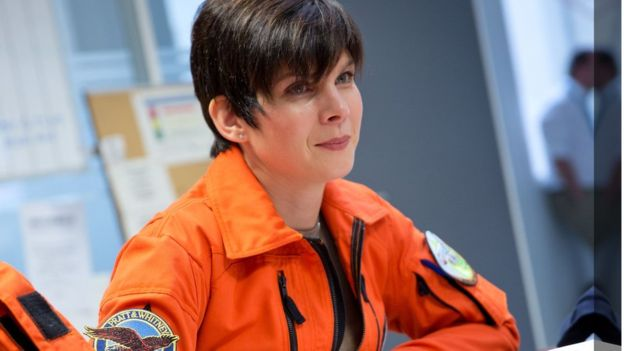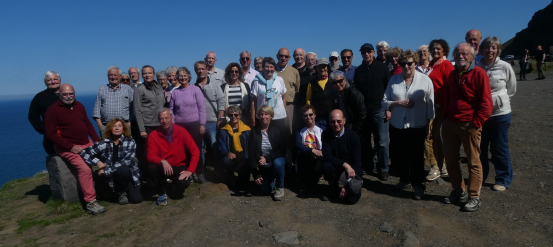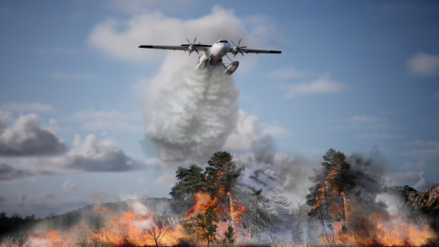Actualités

Dubai Air Show : The challenges for us all in flying green
Trouble is, not only does aviation contribute 2% of global emissions, that figure is set to rise over the next few years.
For example, the firm's new UltraFan, set for commercial use in the next decade, is one of the biggest leaps in engine technology for 50 years. "And once you've got the latest gas turbine on your aircraft, the next thing to do is look at the fuel you're burning," he says.
Commercial airlines are forecast to use about 97bn gallons of jet fuel this year, a record. But, says Alejandro Rios Galvan, a bioenergy expert and professor at Khalifa University in Abu Dhabi, there is simply no alternative available in the short term.
He believes plant based bio-fuels currently offer the best option. "These have the capacity to reduce the carbon footprint anywhere between 50-80% when you compare them to fossil."
Bio-fuels are already being used in very small quantities. All flights from Los Angeles and Oslo, for example, carry a tiny bio-fuel mix. But there are many issues around price and production of this fuel.
A problem is that airlines operate on wafer thin profit margins. They are not going to adopt anything that in-creases their cost base, he says.
But he adds: "The costs [of bio fuels] have come down significantly as more infrastructure is built to refine these products. It may only be a few years before they can compete on par basis with cost of fossil fuel."
One route is to get rid of fuels completely, or perhaps combine them in electric hybrid engines. It's not an option for huge long-haul airliners. But for smaller aircraft covering perhaps 1,000 miles "electrification is a really good opportunity," says Mr Churnock. "It offers the possibility of a carbon neutral flight for a limited range."
Airbus has been a leader in electric development. Sandra Bour Schaeffer, (Ensma-D 2001S) Ho Airbus Group Demonstrators / CEO Airbus UpNext- the European plane maker's head of demonstrators, said that every tonne of fuel saved means a saving of three tonnes of CO2 emissions. "So it is absolutely crucial that work is done on the electric engine side."
And the industry is getting close to real commercial breakthrough technology, Mrs Bour Schaeffer said. In 2015, Airbus' E-Fan all-electrical aircraft crossed the English Channel on 60 kilowatts of power.
In 2021 the company's E-FanX hybrid electrical aircraft will use two megawatts. "It's a huge improvement," she said. "It's about learning and stretching the technology."
And yet, these developments are only medium to long-term solutions. Mrs Bour Schaeffer doesn't foresee commercial electric aircraft flying until the mid-2030s. The aviation industry has committed to halving emis-sions by 2050. With air travel set to double over the next 20 years, that target looks a tall order.
But just because big breakthrough technologies are years away does not mean nothing can be done in the short term, the BBC's expert panel say.
There are multiple improvements being made : better aircraft aerodynamics, changes to ways aircraft taxi on runways, use of lighter materials, improvements to airspace use to allow more straight-line flying and reduce holding patterns.
An Airbus project called "Fello'fly" will experiment with aircraft flying behind each other. The idea is that the trailing aircraft flies in the updraft of the one in front, allowing it to reduce engine thrust. Sound fanciful? Ms Bour Schaeffer says this pairing of aircraft can save 5-10% in fuel.
Mr Curnock points to another easy win. If an aircraft descends into an airport at constant rate it can save about 150 kilograms of carbon. "These are really simple things that can be done through good air traffic control. They can have an impact in the short term while we are developing the bigger harder-hitting technology."
Such things don't necessarily make good headlines. But cumulatively they can make a difference. The issue for aviation, though, is whether it's enough in the short term to stave off taxation, regulation, protests and "flight shamers" until the industry can prove its long term solutions are working.
Extracts of the article of BBC News. By Russell Hotten, Sameer Hashmi, Adrienne Murray Dubai Air Show -November 22 th
Airbus Fello'fly Harvests Wake Energy to Save Fuel
Inspired by biomimicry, Airbus (Stand 940; Pavilion P10) unveiled at the Dubai Airshow a project, Fello'fly, aimed at demonstrating the technical, operational, and commercial benefits of having two or more aircraft flying together to reduce fuel consumption, much as birds do.
“When birds fly in formation, they are using the updraft of the wake of the previous bird, therefore they have 'free' lift that reduces their own consumption” of energy, said Sandra Bour Schaeffer, head of Airbus Group Demonstrators.
Calling the concept “wake-energy retrieval,” the demonstrator project aims to harvest the otherwise wasted kinetic energy generated by an aircraft wing, allowing a properly positioned aircraft in trail to reduce its energy consumption from 5 to 10 percent, without affecting passenger comfort. Tests conducted last year with two
A380s confirmed the findings, Schaeffer said.
Airbus has discovered that rather than the tight formations seen in the avian world, the ideal zone for aircraft wake-energy retrieval is about 3 km, or 1.5 to 2 miles behind the lead, regardless of aircraft category. Airbus believes the concept could be applied in commercial aviation before the middle of the coming decade.
“We know the technology is there, it is feasible, and we can find a place [for trailing aircraft] safe from the first aircraft,” said Schaeffer, adding that two nondisclosed airlines are working with Airbus on the project, as are air traffic control organizations.
Operational trials in oceanic airspace are planned for 2021 “with real airlines and traffic management that will define the procedures for such flights,” Schaeffer said. While tests involve only two aircraft, theoretically there’s no limit to the number of aircraft could harvest wake energy in group flights.
AIN ON LINE by James Wynbrandt - November 18, 2019



















Aucun commentaire
Vous devez être connecté pour laisser un commentaire. Connectez-vous.